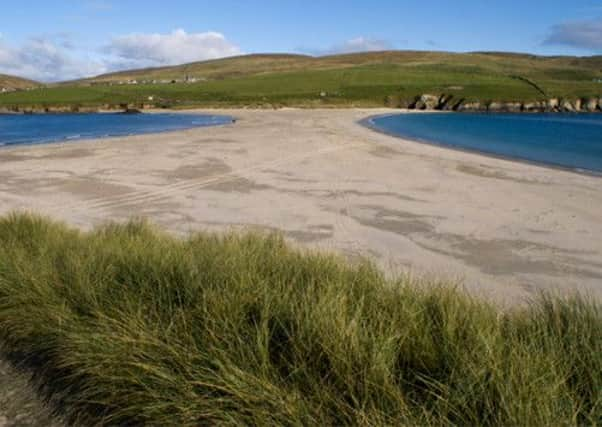Shetland beach among best places in world to swim


St Ninian’s Isle is one of the finest sand tombolos in Europe, and it is the largest active tombolo - in which an island is attached to the mainland by a narrow piece of land such as a spit or bar - in the UK.
Now the beauty spot is the only place in Scotland to make the list of “the 50 best swims in the world.”
Advertisement
Hide AdAdvertisement
Hide AdTravel magazine named St Ninian’s among a list topped by Lesser Cyclades in the Greek Isles as well as other more exotic gems like Blue Bay, Mauritius, Morninton Peninsula and Fraser Island in Australia, Plage Mala, Cote D’Azur in France, Silent Beach, Tangalle, Sri Lanka, Phang Nga Bay, Thailand, North Island, Seychelles, Carlisle Bay, Barbados and even Pendulum Cove on Deception Island in Antarctica where the water can vary between 70 degrees C - due to geothermal heating by an underwater volcano - and minus 2 degrees C.
Travel described St Ninian’s Isle as “spectacular”.
“It can’t fail to strike you that if this beach was anywhere else in Europe, prefab hotels and deckchair hawkers would have ruined it long ago,” it said.
“But thankfully, it’s on a remote, wind-thrashed corner on the west coast of Shetland, so you’ll have it all to yourself.
“You’re now closer to Norway than you are to Aberdeen, so it’ll be a quick and shivery dip, but the clear water and nothing-but-nature views make it an exhilarating one.”
Spits, bars and ayres or tombolos are characteristic of the inner coast and voes of Shetland. They are typical of submerging coastlines.
During glacial times, a large amount of water was locked away as ice, making sea levels considerably lower. Only when the ice began to melt some 12,000 years ago did the seas begin to rise.
Much of Shetland became a flooded landscape as the lower ends of its valleys drowned beneath the rising waters. Numerous sea inlets - the ‘voes’ now characteristic of Shetland - were formed. In addition, rising sea levels reworked sediments to produce stunning sandy or shingle beaches, bars and tombolos like St. Ninian’s.
The chapel on St. Ninian’s Isle is famous for the “treasure” - 28 Pictish silver objects and the jaw bone of a porpoise which were buried under a cross-marked slab close to the altar.
Advertisement
Hide AdAdvertisement
Hide AdThe site was excavated in the late 1950s and in 2000/2001 and the graveyard demonstrates a continuity of pre Christian and Christian burial.
The “treasure” was of several different styles and was thought to be the collection of a family rather than ecclesiastical and includes bowls, weaponry and jewellery. People believed that the Church would not be violated and that it was therefore a good place in which to hide things for safekeeping. The treasure was indeed safe until 1958 when a Shetland schoolboy working on the excavation discovered it. The silver is in the National Museum of Scotland, but replicas can be seen in the Shetland Museum.